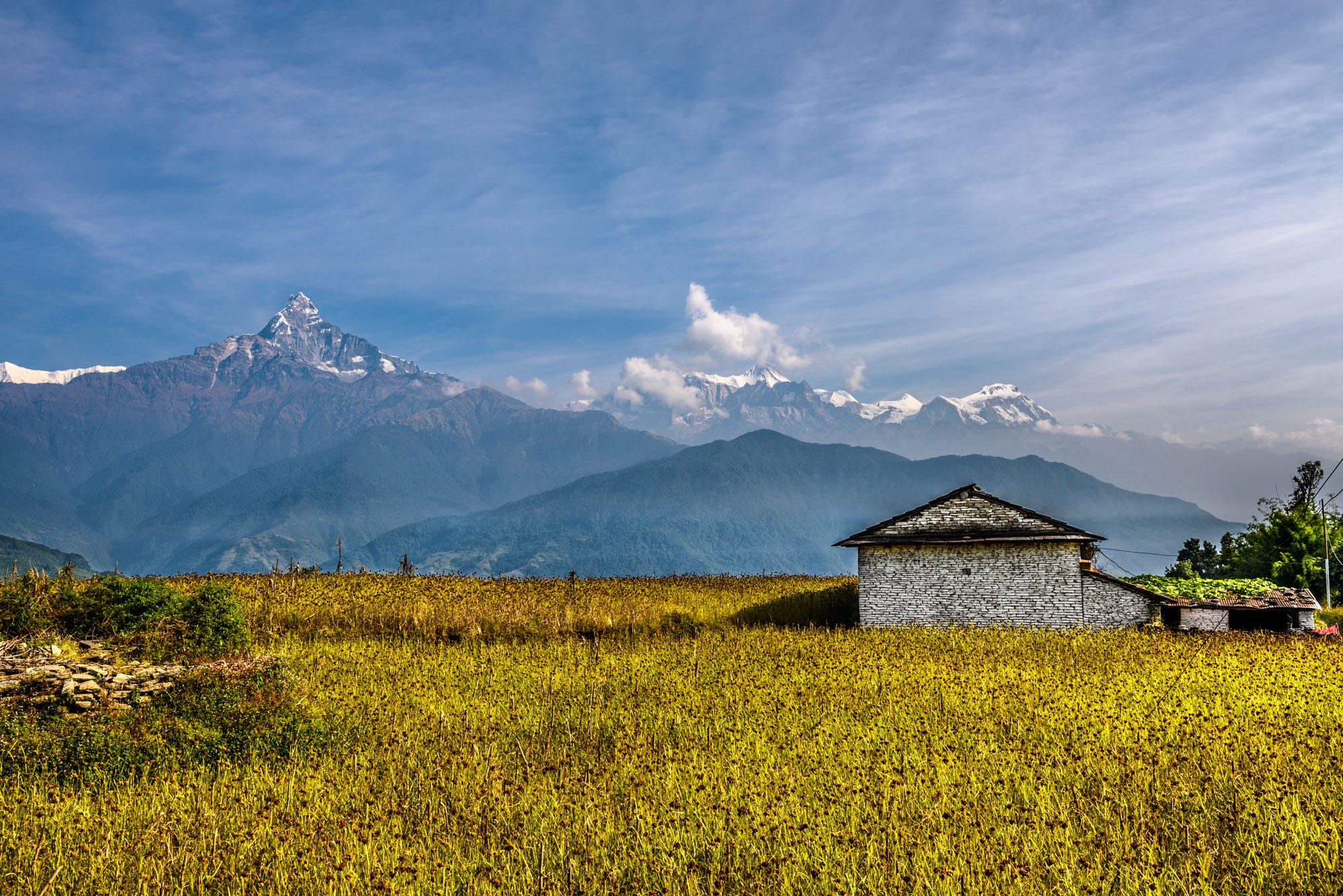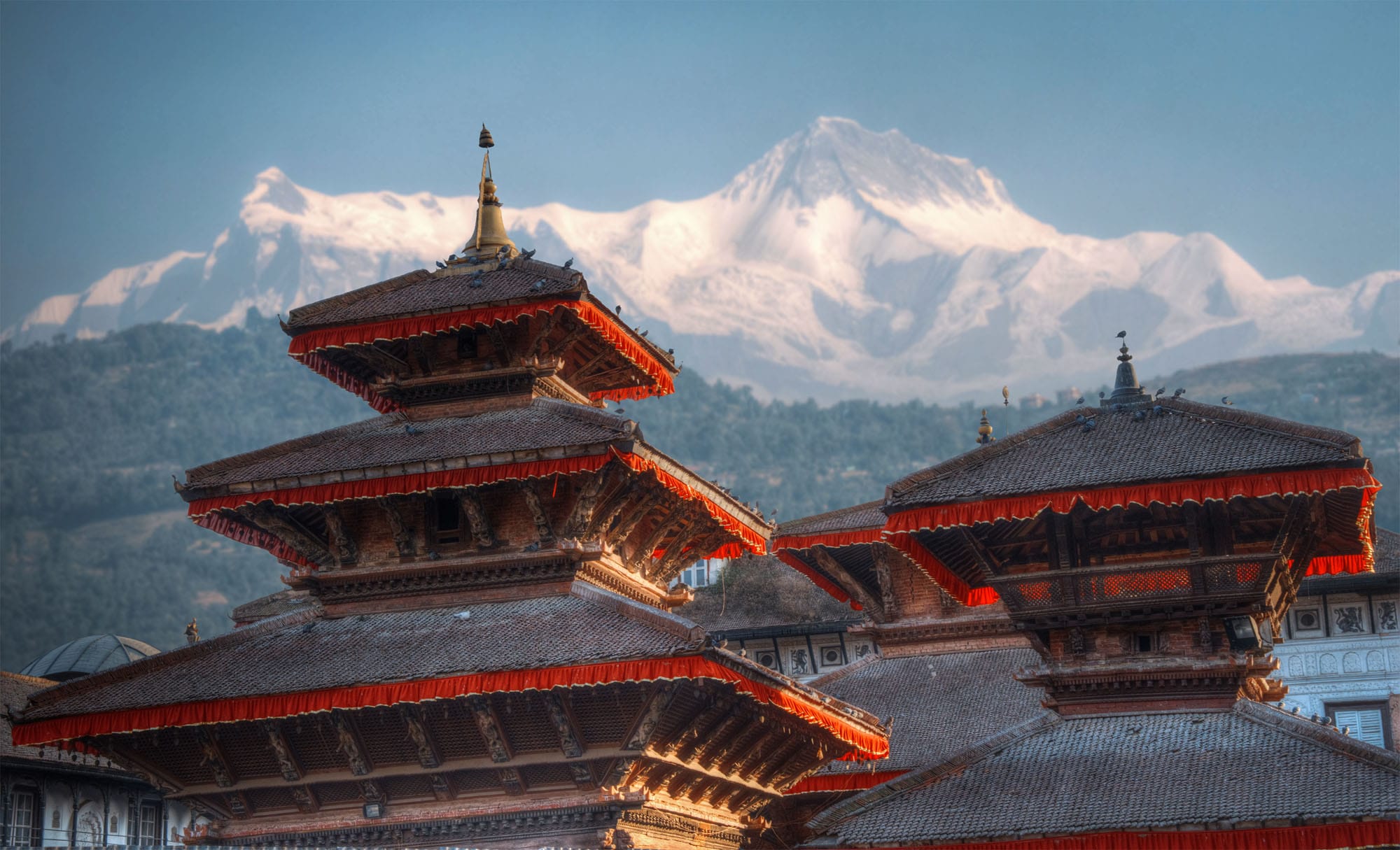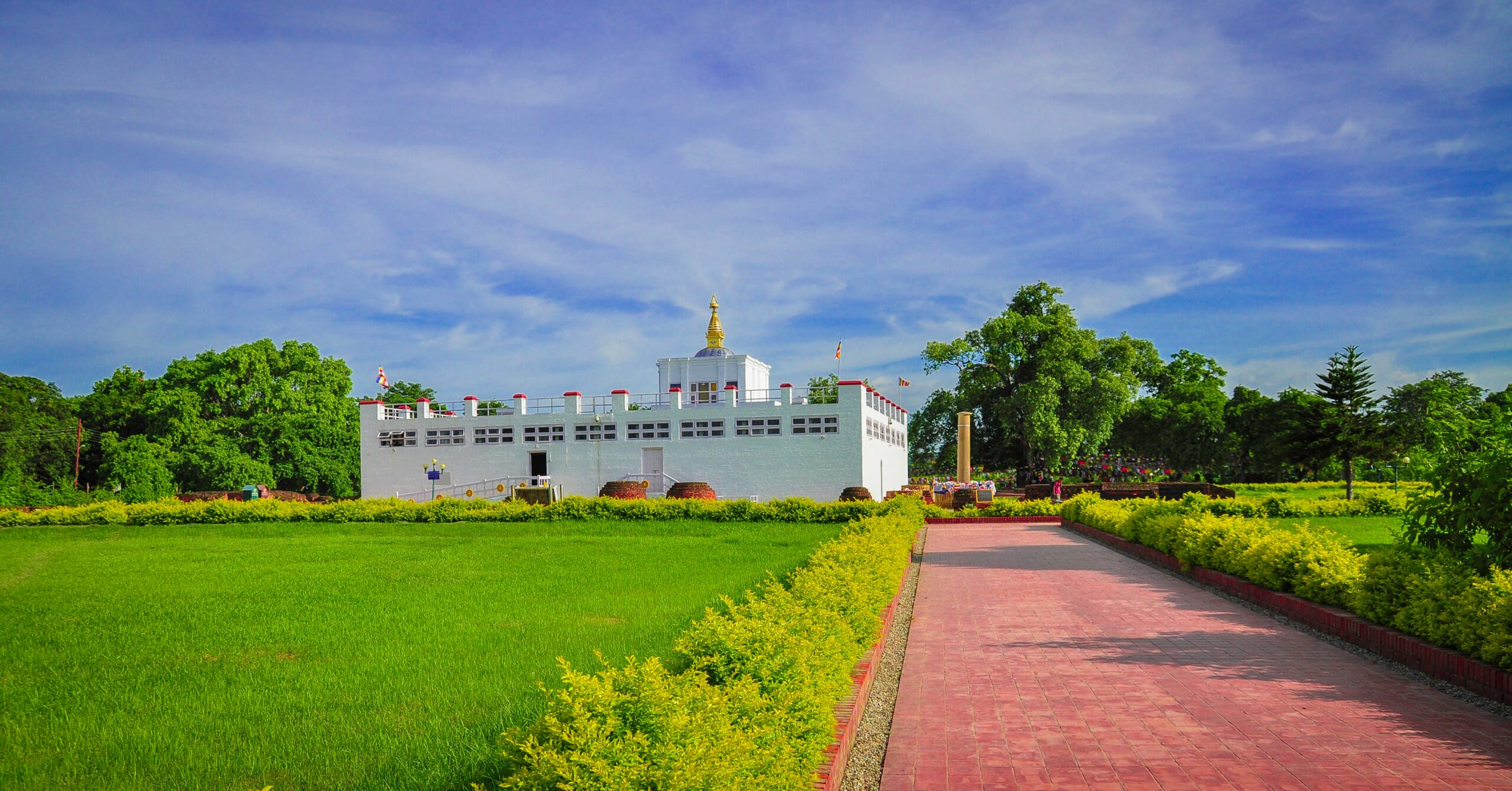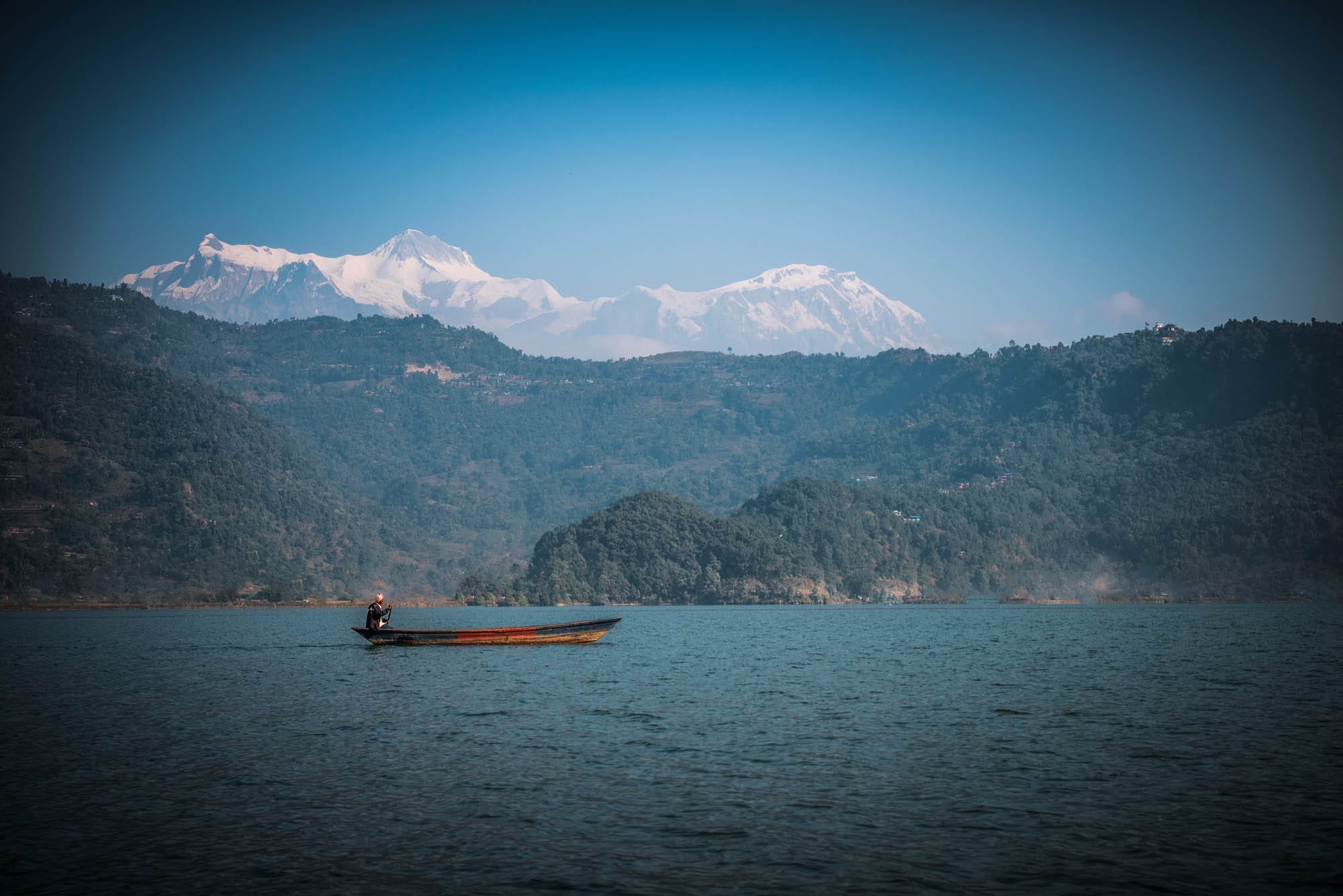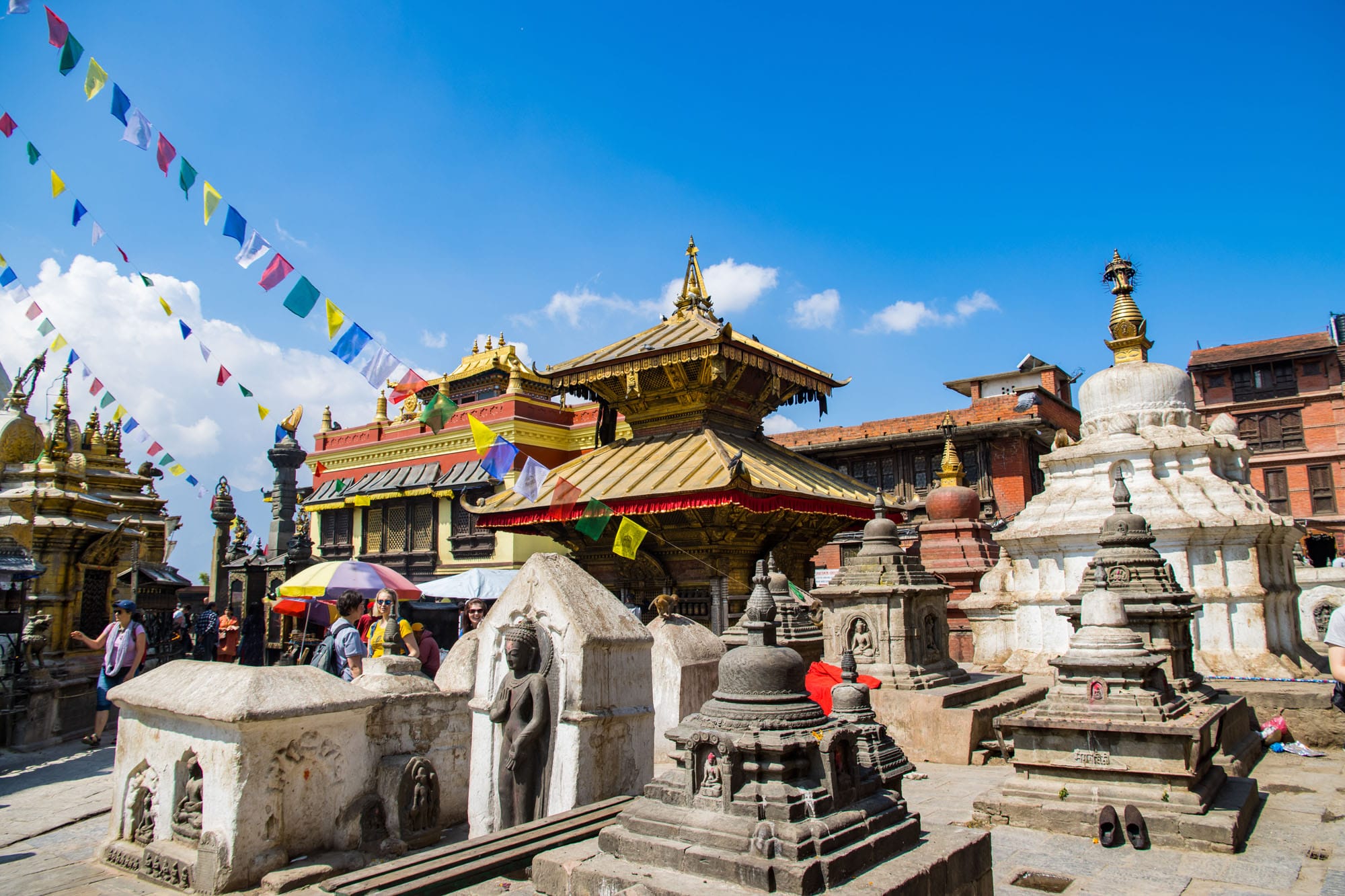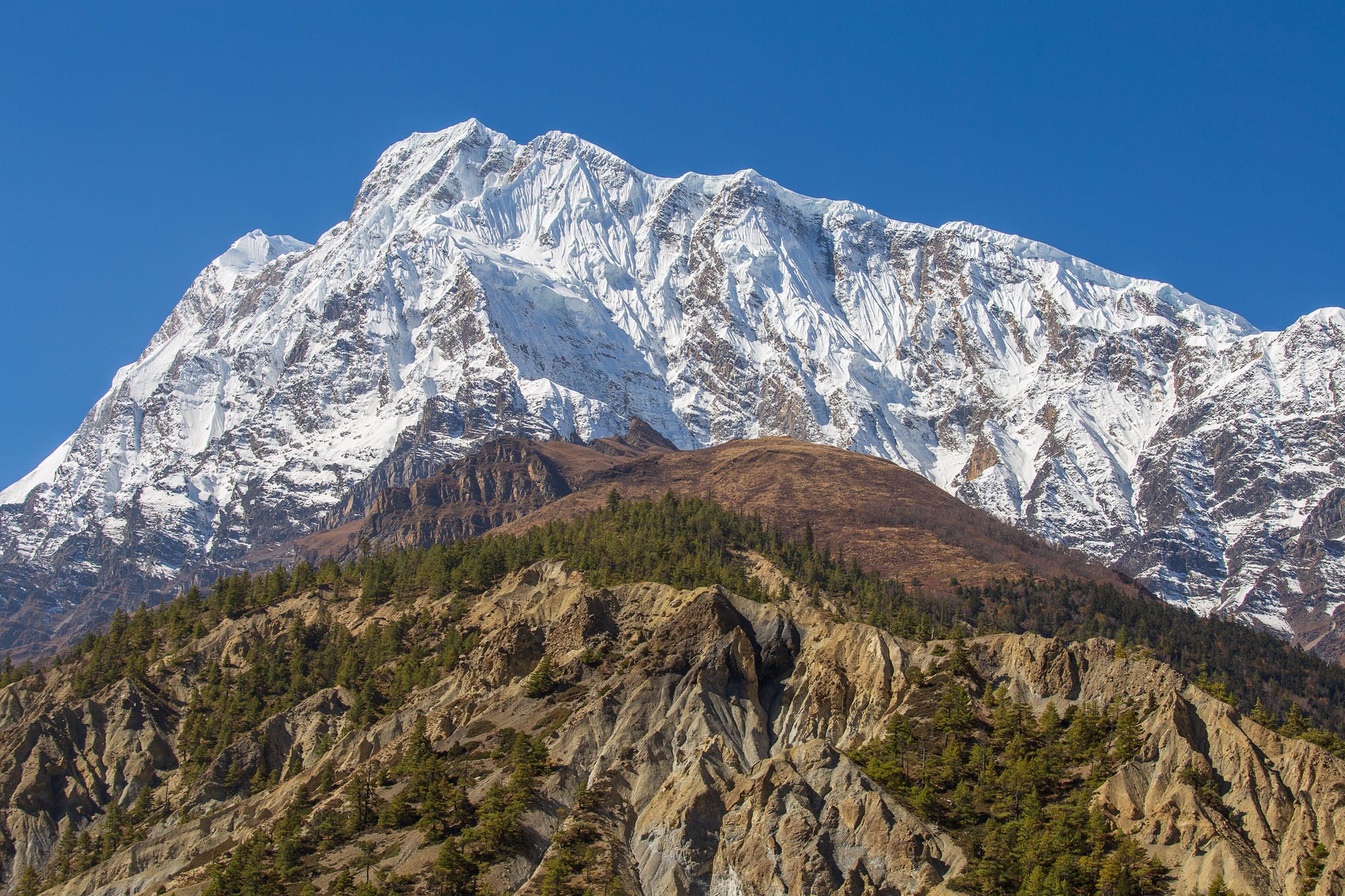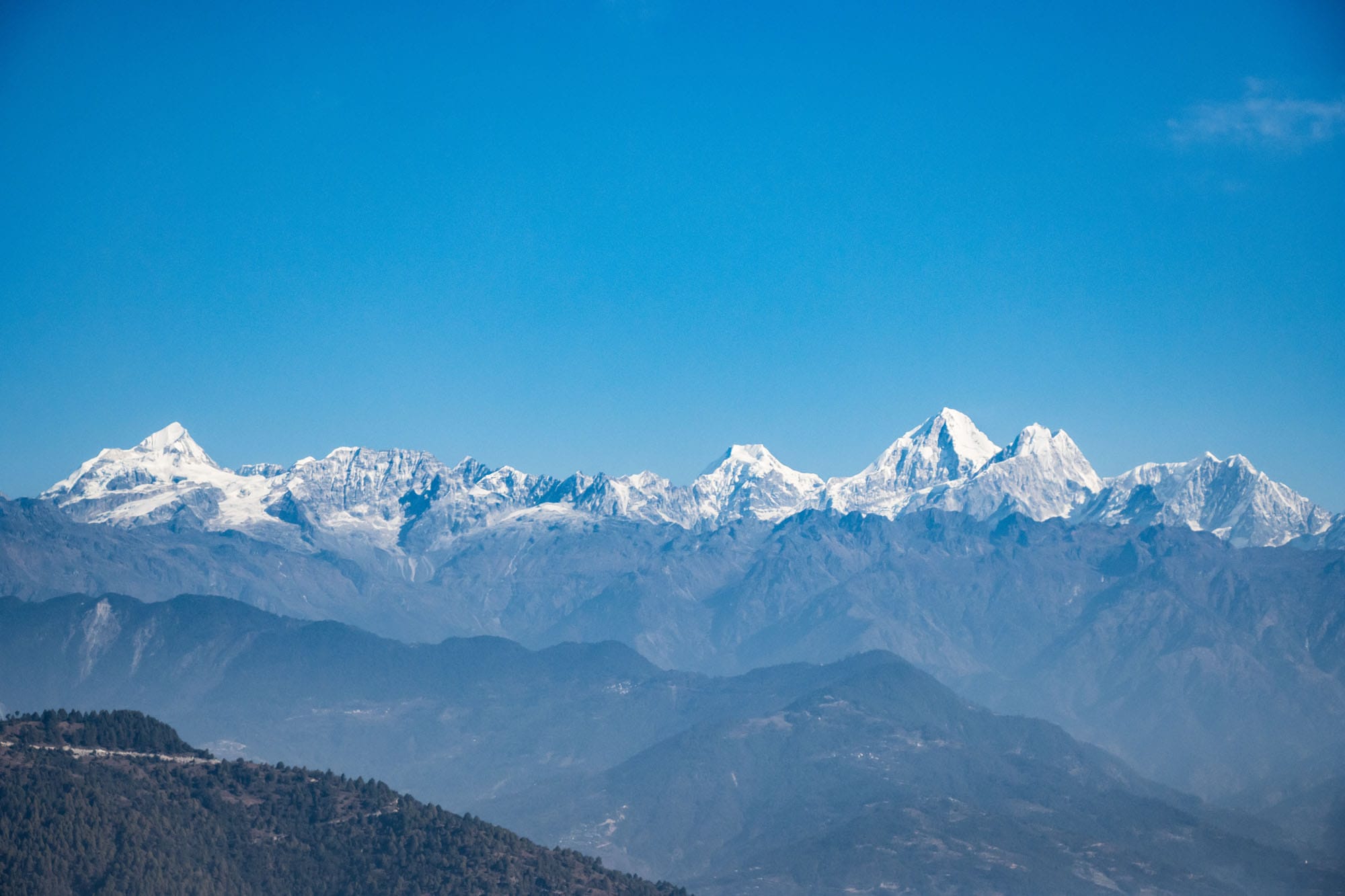Kathmandu Tour with Day Hike – 5 Days
Best Season
Highest Altitude
Trip Overview
Embark on an unforgettable journey with our 5-day Kathmandu Tour, which combines cultural exploration with a scenic day hike to Nagarkot. This tour offers a perfect blend of Nepal’s rich heritage and natural beauty. Additionally, providing a comprehensive experience of the Kathmandu Valley’s most iconic sights.
Your adventure begins with an exploration of Kathmandu, where you’ll visit UNESCO World Heritage Sites such as the revered Pashupatinath Temple, the serene Swayambhunath Stupa (also known as the Monkey Temple), and the grand Bouddhanath Stupa. Each site offers a unique glimpse into Nepal’s spiritual and historical landscape, showcasing intricate architecture and vibrant local traditions.
Following your cultural tour, you’ll set out on a refreshing hike from Sankhu to Nagarkot. This charming hilltop town is renowned for its breathtaking panoramic views of the Himalayan range, making it an ideal spot to immerse yourself in Nepal’s natural splendor. The hike offers a chance to experience the serene beauty of the countryside and observe traditional village life up close.
On your return journey to Kathmandu, you’ll explore Bhaktapur and Patan Durbar Squares, both renowned for their exquisite architecture and historical significance. Marvel at the detailed craftsmanship of ancient temples and royal palaces, providing further insight into Nepal’s rich cultural legacy.
This 5-day tour includes comfortable accommodations, guided sightseeing, and all necessary transfers, ensuring a seamless and enriching travel experience. Perfect for those seeking a blend of cultural immersion and natural beauty. The Kathmandu Tour with Day Hike promises a memorable exploration of Nepal’s heart and soul.
Trip Highlights
- Cultural Immersion: Discover Kathmandu’s UNESCO World Heritage sites, including Pashupatinath Temple, Swayambhunath Stupa, and Bouddhanath Stupa.
- Architectural Marvels: Marvel at the intricate craftsmanship of Kathmandu’s palaces and temples.
- Scenic Hike: Enjoy a scenic hike to Nagarkot, renowned for its panoramic views of the Himalayas.
- Local Insight: Experience the local culture and traditions of the Kathmandu Valley.
- Historic Sites: Visit Bhaktapur and Patan Durbar Squares to explore their historic and architectural wonders.
Route Overview
- Day 1: Arrival in Kathmandu; explore Pashupatinath Temple and Boudhanath Stupa.
- Day 2: Visit Swayambhunath Stupa and Kathmandu Durbar Square; leisure time in Thamel.
- Day 3: Begin the day hike from Sankhu to Nagarkot; overnight stay in Nagarkot with a sunset view.
- Day 4: Morning sunrise view from Nagarkot; drive to Bhaktapur and Patan for a cultural exploration of Durbar Squares; return to Kathmandu.
- Day 5: Free time for shopping or personal exploration; departure from Kathmandu.
Significance of the Cities
- Kathmandu: The capital city, known for its rich history, diverse culture, and numerous UNESCO World Heritage Sites that reflect the architectural brilliance and spiritual depth of Nepal.
- Nagarkot: A hilltop village offering stunning sunrise and sunset views over the Himalayas, including Mount Everest on a clear day. It is known for its serene environment and panoramic vistas.
- Bhaktapur: A medieval city renowned for its well-preserved palace courtyards, ancient temples, and traditional Newari culture.
- Patan: Famous for its historic Durbar Square, ancient arts, crafts, and rich cultural heritage.
Recommended Time to Visit
- The best time to embark on this tour is from Autumn (September to November) or Spring (March to May), when the weather is mild, and the skies are usually clear, providing stunning views of the mountains and ideal conditions for hiking.
Itinerary
Upon arrival at Tribhuvan International Airport in Kathmandu, you will be greeted by your guide and transferred to your hotel in the city. The capital of Nepal, Kathmandu is a vibrant mix of ancient culture, spirituality, and bustling modern life. After checking in and settling into your hotel, you can spend the rest of the day at leisure, exploring the surroundings at your own pace or resting from your flight. Depending on your arrival time, you might enjoy a short stroll around Thamel, the tourist hub, known for its lively streets, shops, and cafes. In the evening, a briefing about your tour will be provided, and you can prepare for the exciting days ahead.
On the second day, your guide will take you on a full day of sightseeing through Kathmandu, allowing you to explore some of the city’s most iconic landmarks. You’ll begin with a visit to Kathmandu Durbar Square, a UNESCO World Heritage Site and a hub of ancient Newar architecture, where you’ll see temples, palaces, and courtyards that have stood for centuries. From there, you’ll head to Swayambhunath Stupa (also known as the Monkey Temple), offering panoramic views of the valley and an insight into Nepalese Buddhism. Later, you’ll visit Pashupatinath Temple, one of the holiest Hindu sites in the world, located on the banks of the Bagmati River, where you may observe sacred rituals. The final stop will be Boudhanath Stupa, a massive stupa surrounded by Tibetan Buddhist monasteries, where you’ll witness the serene and spiritual atmosphere of one of the largest stupas in Nepal. This day will give you a deep dive into the history, culture, and religious traditions that form the foundation of Kathmandu.
Today’s adventure begins with an early drive from Kathmandu to Sankhu, a small village located on the northern outskirts of the city. Sankhu is known for its peaceful environment and traditional Newar culture. From here, you’ll begin your hike towards Nagarkot, a popular hill station renowned for its spectacular mountain views, particularly at sunrise. The trek to Nagarkot will take you through scenic rural landscapes, with terraced fields, traditional villages, and lush forests surrounding you. Along the way, you’ll pass through small villages where you can experience the local lifestyle and hospitality. After a few hours of hiking, you’ll arrive in Nagarkot, where you can enjoy breathtaking views of the Himalayas, including the peaks of Mount Everest (on a clear day), Langtang, and Ganesh Himal. The evening in Nagarkot offers an opportunity to relax while taking in the stunning sunset views.
After enjoying the sunrise over the Himalayas from Nagarkot, you will have some time to explore the area and take in the panoramic views of the surrounding valley and mountains. You can also take a short walk around the area to explore the natural beauty and tranquility of the place. In the morning, after a hearty breakfast, you’ll begin your descent back to Kathmandu. The drive back will take you through picturesque countryside and small towns, giving you another chance to witness Nepal’s rural landscape. Once back in Kathmandu, you’ll have the afternoon at leisure to rest or explore more of the city. You might want to visit local markets, shop for souvenirs, or simply relax before your departure the following day.
On the final day of your tour, you will be transferred to Tribhuvan International Airport for your departure flight. Depending on the time of your flight, you may have some free time to do last-minute shopping or visit any remaining sights in Kathmandu. Your guide will assist you with your departure process and ensure that you have a smooth and stress-free journey. Reflect on the incredible experiences of the past few days—visiting historical sites in Kathmandu, enjoying panoramic mountain views, and hiking through serene landscapes. This tour offers a perfect blend of cultural immersion and adventure, making it a truly memorable trip.
Book Now
Send an Inquiry
Got A Question?

Mr. Shishir Dhakal
Price Inclusion
- Private ground transportation, including airport transfers
- 3 nights at a 3-star hotel in Kathmandu with breakfast
- 1 night at a 3-star hotel in Nagarkot with full board meals
- Guided sightseeing in Kathmandu, including entrance fees
- English-speaking guide for the Nagarkot hike
- Farewell dinner in Kathmandu
- All government taxes and service charges
Price Exclusion
- Meals not specified in the itinerary
- International airfare
- Nepal entry visa
- Tips and gratuities for guides and drivers
Additional Information
Meals and Accommodation on Kathmandu Tour with Day Hike
Meals:
- Breakfast: Daily breakfast is typically provided at your hotel.
- Lunch and Dinner: Lunch and dinner are generally not included, but options will be available at local restaurants, especially in Kathmandu and Nagarkot. In Nagarkot, enjoy local and international cuisine with views of the Himalayas.
- Hiking Day: Lunch can be enjoyed at local eateries along the hiking route to Nagarkot, offering traditional Nepalese dishes.
Accommodation:
- Kathmandu: Comfortable accommodations in a 3-star or equivalent hotel with breakfast included.
- Nagarkot: Overnight stay in a hilltop hotel or lodge offering views of the Himalayas, providing a peaceful retreat after the hike.
Best Season to Visit
The ideal seasons for this 5-day Kathmandu tour are:
- Autumn (September to November): Known for clear skies and mild temperatures, this season offers the best mountain views and is perfect for sightseeing and hiking.
- Spring (March to May): Pleasant weather, blooming rhododendrons, and vibrant natural landscapes make this an ideal time for both cultural exploration and enjoying the scenic hike to Nagarkot.
Equipment Checklist
Clothing:
- Casual wear: Comfortable clothes for city sightseeing (lightweight shirts, pants, T-shirts).
- Warm layers: Fleece jacket or sweater for cooler mornings and evenings, especially in Nagarkot.
- Outer layer: Waterproof jacket and pants (useful during monsoon season).
- Footwear: Comfortable walking shoes for city tours, sturdy shoes for nature walks in Chitwan.
- Headwear: Sun hat or cap, warm hat or beanie (for Nagarkot).
Accessories:
- Sunglasses: With UV protection for bright days.
- Sunscreen and lip balm: Essential for sun protection.
- Daypack: 15-20L for carrying personal items during daily tours.
- Reusable water bottle: 1-2L capacity.
- Personal hygiene items: Toothbrush, toothpaste, wet wipes, quick-dry towel.
Optional:
- Camera and power bank: To capture the scenic views.
- Personal medications: Any prescribed or essential medications.
Frequently Asked Questions(FAQs)
What are the must-visit temples in Kathmandu?
When visiting Kathmandu, there are several temples that shouldn’t be missed. The top must-visit temples include Pashupatinath Temple, a sacred Hindu site, and Boudhanath Stupa, a iconic Buddhist monument. Other notable temples such as Swayambhunath Stupa (Monkey Temple), Kathmandu Durbar Square, Kasthamandap Temple, Jaranath Temple, and Dakshinkali Temple offer a glimpse into Nepal’s rich cultural heritage and spiritual traditions. At Mount Elegance Treks and Expedition, we can help you plan a personalized tour to explore these incredible temples and experience the best of Kathmandu.
Can tourists participate in Holi celebrations in Nepal?
Holi, the Festival of Colors, is a vibrant and joyous celebration in Nepal, and tourists are more than welcome to participate in the festivities! Holi is a time-honored tradition that marks the arrival of spring and the victory of good over evil. During the celebrations, visitors can expect to be greeted with colorful powders, known as gulal, and water, which are used to sing, dance, and play together. Many locals and tourists alike participate in the Holi celebrations, and it’s a wonderful opportunity to experience the warmth and hospitality of the Nepalese people. At Mount Elegance Treks and Expedition, we recommend being respectful of local customs and traditions, and suggest that you wear old clothes and bring a change of clothes to participate in the festivities. Our expert team can also help you plan your Holi celebrations in Nepal, ensuring that you have a safe and unforgettable experience.
What is Nepali cuisine known for?
Nepali cuisine is a delicious and diverse reflection of the country’s cultural heritage and geographical diversity. Known for its bold flavors, spices, and hearty portions, Nepali cuisine is a delightful blend of Indian, Tibetan, and regional influences. Some of the must-try dishes include dal bhat, a staple dish of lentil soup, rice, and vegetables; momos, steamed or fried dumplings filled with meat or vegetables; gorkhali lamb, a rich and spicy lamb curry; and sel roti, a sweet, deep-fried rice bread. Nepali cuisine is also known for its use of fresh ingredients, including herbs, vegetables, and dairy products, which are widely available in the country. At Mount Elegance Treks and Expedition, we recommend trying the local cuisine during your visit to Nepal, and our expert team can suggest the best restaurants and dishes to try, ensuring that you experience the authentic flavors of Nepali cuisine.
Where can I try authentic Nepali food in Kathmandu?
Looking to indulge in the flavors of Nepal? You can find authentic Nepali cuisine in various restaurants and eateries throughout Kathmandu. Thamel is a great place to start, with many local restaurants serving traditional dishes like dal bhat, momos, and selewals. Some popular spots include Durbar Restaurant and Jal Vihar Restaurant. Our team at Mount Elegance Treks and Expedition would be happy to provide more recommendations and insider tips on where to find the best Nepali cuisine during your stay in Kathmandu.
What is momos and where can I find the best ones?
In Nepal, momos are a type of traditional dumpling that is a staple in Nepalese cuisine. Typically filled with meat or vegetables, momos are steamed to perfection and served with a dipping sauce. If you’re looking to try the best momos in Kathmandu, head to Thamel, a hub for local eateries and restaurants. Some popular spots include Thali Track, Momo Star, and K Spending Pass, which serve a wide variety of momos, from classic pork and chicken to innovative vegetarian options. Our team at Mount Elegance Treks and Expedition can also provide recommendations and insider tips on where to find the tastiest momos during your visit.
Where are the best places to shop in Kathmandu?
Kathmandu is a shopper’s paradise, with a wide range of markets and streets offering everything from traditional handicrafts to modern boutiques. Thamel is a must-visit destination, with its vibrant streets lined with shops, markets, and stalls selling everything from souvenirs to clothing to trekking gear. Other popular shopping spots include the Asan Market, the New Road, and the Bhaktapur Durbar Square, which offer a glimpse into Nepal’s rich cultural heritage and traditional craftsmanship. Our team at Mount Elegance Treks and Expedition can provide recommendations and insider tips on the best places to shop, from local artisans and markets to high-end boutiques, to help you find the perfect souvenirs and treasures to take home.
What types of accommodation are available in Nepal?
Nepal offers a wide range of accommodation options to suit every budget and preference, from luxury hotels to budget-friendly guesthouses and camping options. Our team at Mount Elegance Treks and Expedition can help you find the perfect place to stay during your Nepal adventure.
Luxury Hotels: Nepal’s major cities, including Kathmandu and Pokhara, offer a range of luxurious hotels with modern amenities and stunning views.
Boutique Hotels: Quaint, family-run hotels that offer a unique and authentic experience, often with traditional architecture and decor.
Budget Guesthouses: Simple, clean, and comfortable guesthouses that offer a great value for money, perfect for backpackers and budget travelers.
Tea Houses: Simple mountain lodges that offer basic accommodation and meals, often with stunning views of the surrounding mountains and valleys.
Camping: For the truly adventurous, camping is an option, with many campsites located in scenic areas, such as national parks and remote villages.
Homestays: Experience Nepalese culture by staying with a local family, offering a unique and immersive experience.
Whether you’re looking for luxury, comfort, or adventure, Nepal has something to offer. Our team can help you choose the best accommodation option for your needs and budget, and provide recommendations for the best places to stay during your Nepal adventure.
What are the best luxury hotels in Kathmandu?
Kathmandu offers a range of luxury hotels that cater to the needs of discerning travelers, providing a comfortable and relaxing base from which to explore the city and its surroundings. Our team at Mount Elegance Treks and Expedition recommends the following top luxury hotels in Kathmandu:
The Dwarika Hotel: A 5-star hotel that offers luxurious rooms, a relaxing spa, and a fine dining restaurant, all set in a beautifully restored 14th-century palace.
The Hyderabad Hotel: A 5-star hotel that features modern rooms, a rooftop restaurant, and a fitness center, with stunning views of the city.
The Shangri-La Hotel: A 5-star hotel that offers luxurious rooms, a spa, and a range of dining options, including a rooftop restaurant with breathtaking views of the Himalayas.
The Hotel Yak & Yeti: A 5-star hotel that combines luxury with traditional Nepalese architecture, featuring a spa, fitness center, and multiple dining options.
* The Hyatt Regency Kathmandu: A 5-star hotel that offers modern rooms, a spa, and a range of dining options, including a rooftop restaurant with stunning views of the city.
These luxury hotels in Kathmandu offer a range of amenities and services, including fine dining, spas, fitness centers, and concierge services, ensuring a comfortable and memorable stay in the city. Our team can help you book the best luxury hotel in Kathmandu to suit your needs and preferences.
What is the best way to get around Kathmandu?
Kathmandu is a bustling city with a mix of modern and traditional transportation options. Our team at Mount Elegance Treks and Expedition recommends the following ways to get around Kathmandu:
Taxi: Taxis are readily available and can be hired from the street or booked in advance. Make sure to agree on the fare before you start your journey.
Rickshaw: Rickshaws are a fun and affordable way to explore the city, but be prepared for a bumpy ride.
Metered Taxi: Kathmandu has introduced a metered taxi system, making it easier to agree on a fare.
Private Car and Driver: We can arrange for a private car and driver for the day, which is a convenient and hassle-free option.
Public Transportation: Kathmandu has a reliable bus and microbus system, which is an affordable way to get around the city.
Walking: Kathmandu is a walkable city, and exploring on foot is a great way to discover its hidden gems.
To avoid traffic congestion and parking issues, we recommend avoiding traveling during peak hours (7-9 am and 4-7 pm) if possible. Our team can also provide guidance on the best routes and transportation options to suit your needs and preferences.
What is the Indra Jatra festival?
Indra Jatra, also known as Yenya or Indra’s Festival, is a centuries-old traditional festival in Nepal, celebrated in the Kathmandu Valley. The festival honors Indra, the king of the gods, and marks the beginning of the monsoon season. The festivities include the installation of colorful festoons and decorations throughout the city, as well as the procession of the Kumari, the Living Goddess of Kathmandu, who is carried on a palanquin through the streets. The festival also features street performances, music, and dance, as well as the celebration of the Bhairabnath temple, where the festivities culminate in a grand procession. At Mount Elegance Treks and Expedition, we highly recommend experiencing the vibrant energy and rich cultural heritage of Indra Jatra during your visit to Nepal, and our expert team will be happy to guide you through the festivities and share the stories behind this extraordinary celebration.
How do Nepalis celebrate Tihar (Festival of Lights)?
Tihar, also known as Deepawali, is a five-day festival of lights in Nepal, celebrated with great enthusiasm and joy. The festival is dedicated to the triumph of light over darkness, good over evil, and knowledge over ignorance. During Tihar, Nepalis light up their homes, streets, and public spaces with candles, lanterns, and diyas, creating a breathtaking display of twinkling lights. The festival is also marked by offering prayers to Goddess Laxmi, the goddess of prosperity, and celebrating the bond between brothers and sisters. On the second day, known as Kaw Piyo, dogs are worshiped and fed, while on the third day, known as Gangaa Puja, cows are honored and revered. The festivities reach their peak on the fifth day, known as Bhai Tika, when brothers are pampered and showered with love and gifts by their sisters. At Mount Elegance Treks and Expedition, we can help you experience the magic of Tihar in Nepal, and share with you the traditions and rituals that make this festival so special.
What is the significance of Pashupatinath Temple?
Pashupatinath Temple is one of the most revered Hindu sites in Nepal, holding profound religious and cultural significance. As a UNESCO World Heritage Site, this ancient temple complex is dedicated to Lord Shiva, considered the destroyer of evil and the transformer of the universe. The temple is not only a sacred site for Hindus, but also a symbol of Nepal’s rich spiritual heritage, attracting thousands of pilgrims and tourists alike. At Mount Elegance Treks and Expedition, we highly recommend a visit to Pashupatinath Temple as a quintessential part of your Nepalese journey, offering a unique glimpse into the country’s deeply rooted religiosity and traditions.
How do I visit Boudhanath Stupa?
Visiting Boudhanath Stupa is a straightforward and rewarding experience. Located in the heart of Kathmandu, the stupa is easily accessible by taxi or on foot. We recommend arriving early in the morning or late in the afternoon to avoid the crowds. As a UNESCO World Heritage Site, the stupa is open to visitors of all faiths, and entrance is free. However, it’s considered polite to dress modestly and remove your shoes when entering the stupa premises. At Mount Elegance Treks and Expedition, we can help you plan a guided tour to Boudhanath Stupa, providing insight into its rich history, culture, and spiritual significance.
What is the history of Swayambhunath (Monkey Temple)?
Swayambhunath, or the Monkey Temple, is a 2,000-year-old Buddhist stupa with a rich and storied history. The site is believed to have been established in the 5th century AD, emerging from a lotus flower that blossomed in a lake. Over the centuries, the stupa has been rebuilt and expanded by various dynasties and cultures, incorporating unique architectural styles and Buddhist traditions. As a UNESCO World Heritage Site, Swayambhunath is now one of Kathmandu’s most famous attractions, known for its stunning white stupa, colorful prayer flags, and resident troop of mischievous rhesus macaques. At Mount Elegance Treks and Expedition, we’d be happy to share the fascinating history and cultural significance of Swayambhunath with you, offering a deeper understanding and appreciation of this incredible monument.
Can tourists enter all areas of Kathmandu Durbar Square?
While Kathmandu Durbar Square is a largely accessible attraction, not all areas are open to tourists. The square is a UNESCO World Heritage Site and a significant cultural hub, with some areas reserved for religious or administrative purposes. Certain sections, such as the Royal Palace and certain temples, may be restricted or require special permission to enter. However, the main courtyard and many of the famous temples, including the Kasthamandap and the Basantapur Museum, are open to visitors. At Mount Elegance Treks and Expedition, we can provide you with a guided tour of Kathmandu Durbar Square, ensuring that you make the most of your visit and gain a deeper understanding of the site’s history, culture, and significance.
What is the entry fee for Bhaktapur Durbar Square?
The entry fee for Bhaktapur Durbar Square is moderate and reasonable, making it accessible to all travelers. As of our latest update, the entrance fee is NPR 1,800 (approximately USD 15) per person for foreigners, while Nepalese citizens and guests from SAARC countries pay NPR 500 (approximately USD 5). This fee allows visitors to explore the entire square, including the famous Taumadhi Square, Dattatraya Square, and the 55-Window Palace. Please note that the fee is subject to change, and we recommend checking with the local authorities or our team for the most up-to-date information. At Mount Elegance Treks and Expedition, we’ll be happy to assist you with all the necessary details and ensure a seamless visit to this incredible cultural heritage site.
What is the best time to visit Patan Durbar Square?
The best time to visit Patan Durbar Square is from October to February, when the weather is mild and pleasant, with average temperatures ranging from 15°C to 25°C (59°F to 77°F). During this period, the skies are clear, and the crowds are relatively smaller, allowing for a more intimate and immersive experience of the square’s stunning temples, palaces, and courtyards. If you prefer to avoid the crowds, consider visiting early in the morning or late in the afternoon, just before the sunset. At Mount Elegance Treks and Expedition, we recommend planning your visit according to your preferences and interests, and our expert team will be happy to provide you with personalized tips and recommendations to make the most of your time in Patan Durbar Square.
What are the major festivals celebrated in Nepal?
Nepal is a country with a rich cultural heritage, and its festivals are an integral part of its identity. Some of the major festivals celebrated in Nepal include the Dashain (Vijayadashami), a 15-day celebration honoring the goddess Durga; Tihar (Deepawali), a five-day festival of lights; Buddha Jayant, commemorating the birth of Lord Buddha; and Losar (Tibetan New Year), a vibrant celebration marking the beginning of the new year in the Tibetan calendar. Additionally, Nepalis also celebrate Wesak, a celebration of Lord Buddha’s birth, enlightenment, and passage into nirvana, as well as the Indra Jatara, a festival honoring the king of the gods. At Mount Elegance Treks and Expedition, we’d be delighted to share the stories and traditions behind these festivals with you, and help you experience the vibrant culture of Nepal firsthand.
When is Dashain festival celebrated in Nepal?
Dashain, also known as Vijayadashami, is Nepal’s most significant and widely celebrated festival. The festival typically falls in September or October, lasting for 15 days. The exact dates vary each year, depending on the lunar calendar, but usually, the festival begins on the first day of the bright fortnight of the month of Ashwin, which corresponds to the Gregorian calendar dates of September or October. The festivities reach their peak on the tenth day, known as Vijayadashami, and gradually subside over the next few days. At Mount Elegance Treks and Expedition, we can help you plan your trip to Nepal to coincide with the Dashain festival, ensuring that you experience the excitement and joy of this revered celebration.
How much does a taxi cost in Kathmandu?
The cost of a taxi in Kathmandu varies depending on the distance, traffic, and type of taxi. Our team at Mount Elegance Treks and Expedition provides the following estimated fares as a general guideline:
Metered Taxi: The fare starts from NPR 200 (approximately USD 1.80) and increases by NPR 10-15 (approximately USD 0.09) per kilometer.
Non-Metered Taxi: The fare is usually negotiated at the start of the journey, with prices ranging from NPR 500-1,000 (approximately USD 4.50-9) for short distances.
Tourist Taxi: These taxis are specifically designed for tourists and have fixed rates, ranging from NPR 1,000-2,000 (approximately USD 9-18) for a one-way journey.
To avoid any confusion, we recommend:
Using a metered taxi for a fair and transparent fare.
Agreeing on the fare before starting your journey with a non-metered taxi.
Asking your hotel or tour operator for recommendations on reliable taxi services.
Our team can also arrange for a private car and driver for the day, which can be a convenient and hassle-free option. We’ll be happy to provide more information and assistance with your transportation needs in Kathmandu.
Experiences That Last a Lifetime
Verified Fantastic Annapurna Base Camp Trek Everything was perfectly organized, down to the last detail. Everything ran smoothly and was very well planned. The care and company were absolutely lovely 🙂 it was amazing time. 9 days of trekking with breathtaking views, delicious food along the way, and amazing guides.On top of that, I ended up in the hospital because of appendicitis, and I was never alone — the organizers surrounded me with exceptional care. Thank you Shishir 🙏🏻Verified Very amazing. Very beautiful places. Breathtaking views and the guide @ Mr. Santosh, very nice and amazing talent.The food and culture was purely loss of words to us. Thank you.Verified Najpiękniejsze góry świata, cudowny magiczny czas. Wspaniale doświadczenie, doskonała organizacja, przemili przewodnicy i porterzy, zawsze gotowi pomóc i wesprzeć radą. Wyprawa którą na zawsze pozostanie w moim sercu.Doznania których nie sposób doświadczyć nie biorąc udziału w tej wyprawie. Z pewnością polecę udział w tej przygodzie moim przyjaciołom.Verified Annapurna circuit, Nar Poo trek, Mardi himal, etc This company manages the entire process very responsibly and leads the contract in detail, very kindly and reliably. Finally all costs are more reasonable than other companiesVerified Mr tourism "I had an incredible experience with Mouth elegance during my Mr. Tourism journey! Their professionalism, expert guidance, and warm hospitality made every trek seamless and unforgettable. Highly recommended for anyone looking to explore Nepal’s breathtaking landscapes!"Verified Annapurna Rounding/Punhill.abc Dream-like sea trip February 13 Annapurna Rounding/Punhill.abcTrekkingMeeting with the president and guide Ray at Tammel Hotel...Knowing everything about travel Thank you for moving forward...I was able to leave the trekking. Thank you.Without completing a journey of 20 days With the hard work of well-led Ray GaidenWe had a comfortable and enjoyable trip.Thank you for the careful care of the local travel agent.I wish to visit again next time.We wish the unlimited development of the travel company.Verified The most wonderful and satisying Trek with the best team b I had the most amazing trip. I had been to Poonhill trek ! Thanks to Mr Shishir Dhakal, and Mount Elegance, such a supportive guy ! Without your help, i may not have such good trip ! my best memory of life !

